Interview with Tony Fretton
May 30, 2008
Interview realized by Irénée Scalbert
London, 1 August 2001. - Irénée Scalbert: You have lived in London for a long time. Can you tell me about your background?
Tony Fretton: I was born in the East of London. My father was an electrician... He and his seven brothers grew up in Hackney. His own father was a commercial glass blower. My mother also grew up in Hackney. She had four sisters. Her father was a tunnel digger.
He worked on the construction of the London Underground and on tunnels in the U.S.A., Mexico and the Far East... While the generation of my grandparents was employed in manual trades, that of my parents was in the building trades. Although they were working people, my parents had sophisticated tastes and were familiar with other cultures. They were energetic, individualistic and sometimes a little wild. Unusually for working people at that time, we went on holiday abroad.
- Where did you go?
To the south of France, Italy, Switzerland, Germany... We always went by car, via places like Belgium, Liechtenstein and the Alps. There is a reason for talking about that. People who see the house which we recently completed in Chelsea say that it is not like an English house but more like being in a foreign country.
- As if it were a resort in the middle of a local context?
Yes, that is absolutely right. I want to change London, to make it into an exotic city.
-How young were you when you left East London?
Two, I think. We were rehoused further east in a suburb in Essex, like so many people of my parents’s generation andbackground. We lived very close to where Robin Evans, the architecture writer, grew up –we were neighbours for a while although we only met later. Eventually my parents were able to buy a house, and we moved to West London, to Uxbridge near Heathrow airport where I spent my adolescence. There were a lot of tough kids at school. I was unusual and artistic, and I looked different. I learned to deal with this environment.
- You read a lot. Where did you get books in your youth?
From the local library! I spend a lot of time in the library.
- So you were an intellectual?
No. That’s not the way I am constructed. I always make things and figure them out afterwards. I took a bohemian stance towards learning quite early, although I admire good scholarship in other people.
- Books are all over the floor of your apartment!
I buy them compulsively. I look at them to find what they can tell me about my work. Sometimes I read them if they are vitally interesting.
- Does this influence your work? Some architects have books next to the drawing board.
I do things. That’s how I work. I am a doer. After I have done it, I see things in it.
- You worked in the building industry. How old were you then?
I was eighteen. I was a construction worker for three years between high school and the AA. I built buildings. I dug foundations by hand, I mixed concrete, I worked with bricklayers and scaffolders.
- Did this have an effect on your study of architecture?
No. I liked the building materials, the shape of excavations in the earth more than the finished building! In fact, I was more interested in art. From a very early age, say thirteen, I was sure that I would be a painter.
- How did you come to architecture?
When I was nineteen, I read a newspaper article about a new plan for a country town and became interested. I was very excited by the prospect of architecture being a social art.
- You joined the Architectural Association in the mid 60’s?
How did you end up there?
I heard that it was good and so I applied. The school clearly thought that I was different and I was accepted. Many students there had been to schools which prepared them to the studies of humanities. I was restless. On my first day at the AA, nothing seemed to happen and I felt deeply uneasy. I was a working man.
- What kind of education did you get?
I did not connect easily with the teaching. You were expected to make the architecture yourself and you were given little direct instruction about how to do it. But there were exceptions, for instance James Gowan. He knew his history. He also knew about construction and how the making of things could be a vehicle for thought. His work, for instance the Leicester Engineering Building which he did with James Stirling, and the Schreiber House, a great design which appeared to me immensely plain and almost ugly in a way that was to me inspirational, gave weight to what he said.
- Can you describe how you work?
At first I reserved time to be myself in the context of the project. I just look at things. I’m very good at noticing things.
- What kind of things?
Things about the client, the program, the site and its surroundings. It is like nature study. You or I go to the country and we can’t tell one blade of grass from another. But somebody who’s looked at the country has a sense of what its objects mean. He knows how they came into being.
- You clearly have a strong interest in how architecture is rooted in its surroundings, in a particular environment which is not architectural in the way most people understand it. In the early 1990’s, I and several other people were puzzled by the photographs which you took of London. How were these photographs taken, and for what purpose?
They came about because a group of people at the AA including Matthias Sauerbruck organized an exhibition for which the site was Earl’s Court in West London. I just walked around and did some psychogeography. I looked at what interested me and photographed it. I chose the few images which interested me and re-took some of them. By doing so, I found a purpose in looking.
- These photographs are very striking in that they seem so characteristic of London.
I have been through all these places. I know them thoroughly. I can sense how they came into being, what they mean, what kind of people live there. I can see their nuances.
- You notice things in anonymous circumstances where most people wouldn’t. This is very striking.
Nothing is anonymous. Or rather nothing is lacking in significance. Anonymity is just a particular condition which we have to put in our minds in order to tolerate being in the city. I find that the current discussion about the anonymous, the everyday, banality gets in the way of sensitive observations.
- But you are clearly interested in these conventions: in how ideas and things become absorbed in culture. How then does this interest come into your work?
My recent work is less about ideas for their own sake. Ideas can be very potent. They reveal things to you. Then they are not interesting any more and you do something else. That’s what happens when you make things. Ideas are a technique for doing things. Making objects is a very particular skill and the basis for it is seldom explicit. Most objects in the world have no logical starting point. They are in a different world, in a somewhat animal-like state.
- This reminds me of Alison and Peter Smithson.
When Peter speaks, whether it is about Lewerentz or his own work, it is always coming from the same part of the mind which makes the buildings. That’s what’s so great. This requires a particular kind of intelligence, one that is physically based and is shared by artists, athletes and animals.
- Practically, how do you work?
I work very fast. For the house in Chelsea, I had looked at the site and had had two or three initial thoughts. When the design was still not formalized, I met the client in the bar of the Institute of Contemporary Arts. I drew the scheme in my sketchbook and said: it will be like this. This is what we built.
- You do not prepare?
I do prepare very carefully. I had been thinking about houses like that for years. I had been looking for example at the Ducal Palace at Urbino.
- I am struck by your choice of example. Of all the great buildings of the Italian Renaissance, the Palace at Urbino is probably the one whose authorship is the most obscure. Yet it is immensely delicate.
It had such enormous beauty, but I could not see how this beauty was made. How to eradicate sources, how to eradicate the evidence of how something came into being and make it in a way which completely transports you: that’s what I am trying to do.
- The outside of Urbino has been altered a great deal. Windows, though beautifully formed, seem to be placed at random in the brickwork.
I find that quality of accomodation very exciting, and it’s in the house in Chelsea. Here I set up a system ordering to give a sense to the architecture. Then I adusted it, even compromised it where there were an advantage to be gained in terms of comfort, a particular view onto the surroundings, or a connection between rooms. I see these things happening at Urbino where a sense of location has been confidently established against the odds.
- Can you give an example?
The palace at Urbino is a refined interior wrestled out of a castle. As I remember it, you come into the courtyard, you then turn into the staircase in a corner. You reach the first floor and enter a state room which is both enormous and comfortable. Beyond, there are all manner of private rooms at the front of the building, high above the public square, as far away as possible from anybody, with huge views over the countryside. Some are very rich, like the study with trompel’oeil marquetry, and some very austere, like the bath house. I like these contrasts. Classical architecture in Italy was very different at that time from later neo-classical buildings in Europe. It was less concerned with the expression of order, power and hierarchy. At Urbino there is a seeming lack of power, a sort of tolerance in the frustration of larger objectives which makes it beautiful and life-like.
- The discussion of control and authorship, which remains informal at Urbino, brings me to the issue of personal expression in architecture. For example, the buildings of Mies have a particular atmosphere which has something to do with man, with his thought, of course, but also with his feelings and his body. The same could be said of James Stirling, and it seems particularly true in your case.
It’s inevitable. You can’t avoid that. Neither should you. You can only work with what you have. As James Gowan said, architects work like novelists, which I take to mean that they present acute observations in a plausible and engaging way. But it is crucial to understand that personal interpretation, however inevitable, is not an end in itself. A building is for other people to understand.
- In other words, it is authorship as a means, not as an end.
Exactly. I would go to any length to avoid making architecture as self-portraiture.
- But you would be equally disappointed if you were to make an architecture that was anonymous.
I don’t think that it is possible. Aesthetics and taste are a factor of human nature.
I have in mind something more particular than this. There is in your buildings a very physical sense which has something to do with you personally. The facade of the Lisson Gallery for example has an uneasiness about it. One doesn’t know whether it’s big or small, solid or precarious. There is an uncertainty about your intentions which seems deliberate though not in a conscious way. It seems to make one experience something which appears not entirely possible. What other buildings do something comparable?
I see it more readily in painting. For example the paintings of Rothko are abstract yet they recall the suggestiveness of paintings by Turner. They oscillate between fact and suggestion.
- The oscillation in your work is often about scale. In the Faith House at Holton Lee, the proportions suggest a comparable ambiguity.
That is because we exploited the fact that the adjacent farmhouse is much smaller than it looks. We located the Faith House building on a rise in the ground so that the roofs of the two buildings are aligned. Yet the old building has two storeys and the new building has only one. The details of Faith House also make ambiguous whether it’s a small Greek temple, a utilitarian farm building or a piece of sculpture. These factors combine into one image, but it is not a steady one. I think that will make it magical. This uncertainty has the effect of making buildings very vital, to keep them alive.
- I would have thought that calmness and instability are contradictory.
When you walk in the Alps, it is often dangerous and cold yet it is deeply calming.
- It makes you feel at once acutely conscious and at the same time at home?
At ease. Our buildings don’t have this lack of stability in every part. Most people find them calm. From the upper floor of the house in Chelsea, you see almost nothing breaking through the line of the horizon. It’s like sleeping in the fields. In fact I design to provide calmness, physical contentment and happiness.
- In what ways has your work changed since you started your practice?
Then, architecture did not seem to me as having anything like the power of the popular music or the art that were produced at the time. In the beginning, I wanted to remake architecture completely, using non-architectural materials. I wanted to go to a completely different place to find my materials, for instance in conceptual art and in performance art. And that’s what I did. Strangely enough, that seems to have been an influence on subsequent generations. But this approach was never meant to be worked into a metier.
- Was it simply a phase?
I am not dismissing that work from the past. I did that work very passionately, then I absorbed it as technique and this led me to do something else. I experiment. In the future, I’m going to speak less, make objects and see what happens.
Article published in a+t 18. Tony Fretton.
RELATED POSTS
|


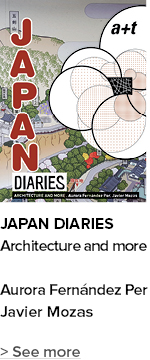
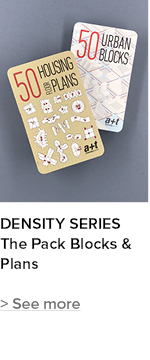

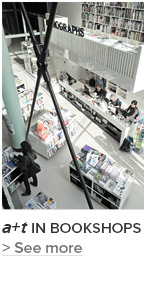
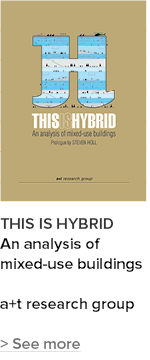


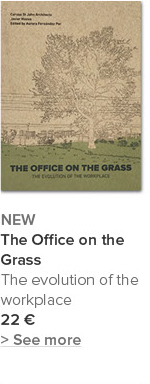
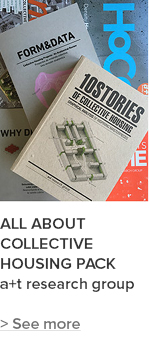
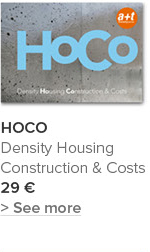
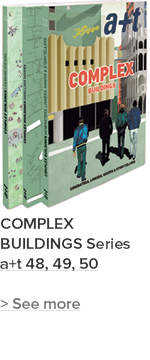

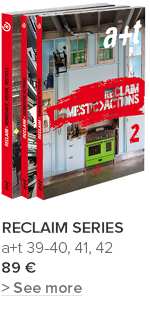
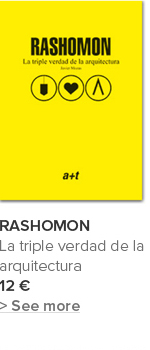
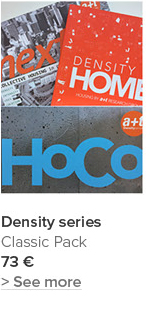





 I've read and agree to
I've read and agree to 


